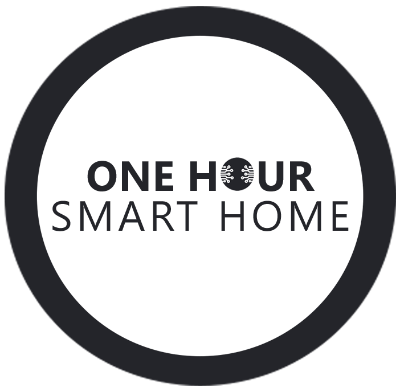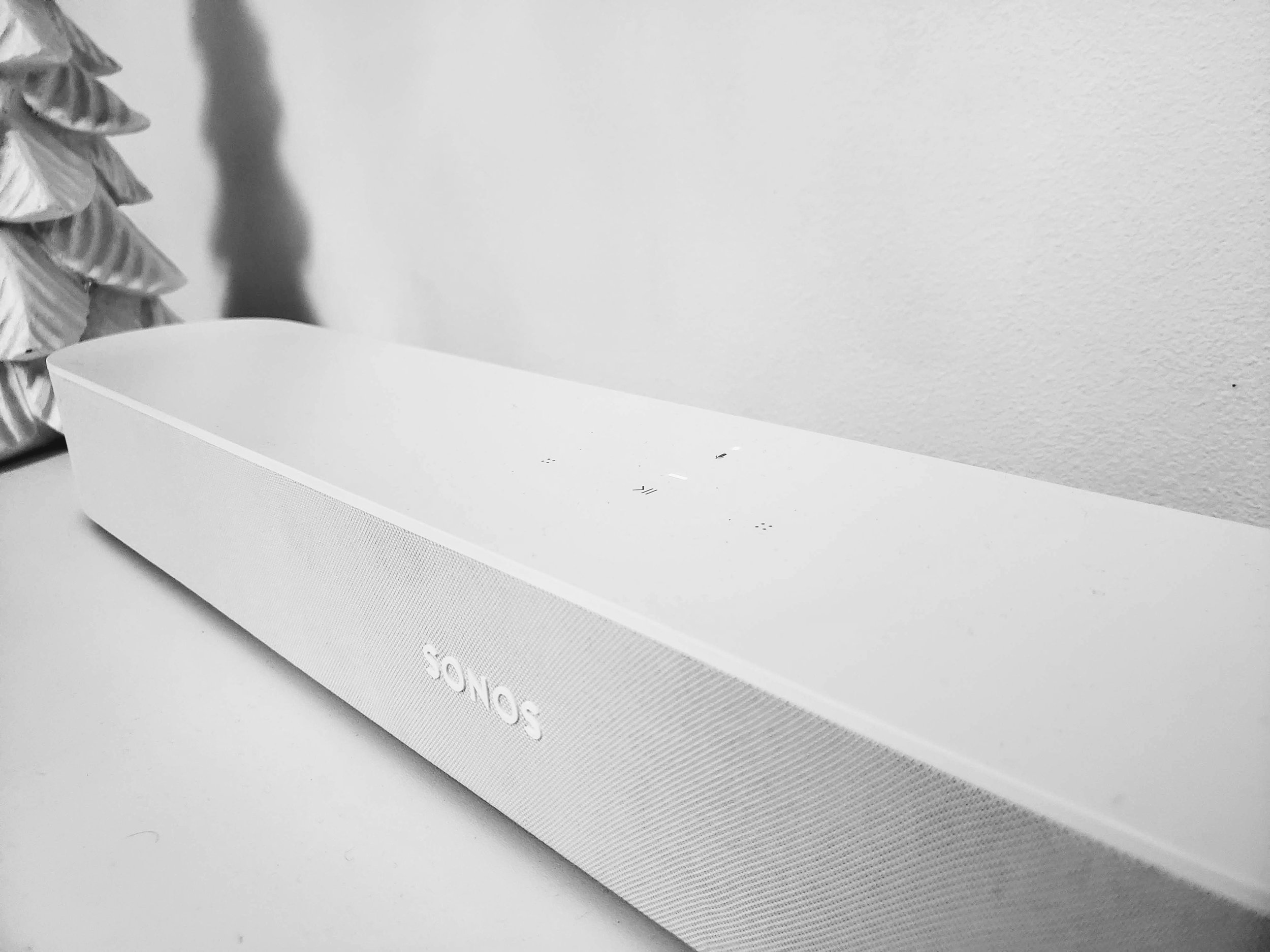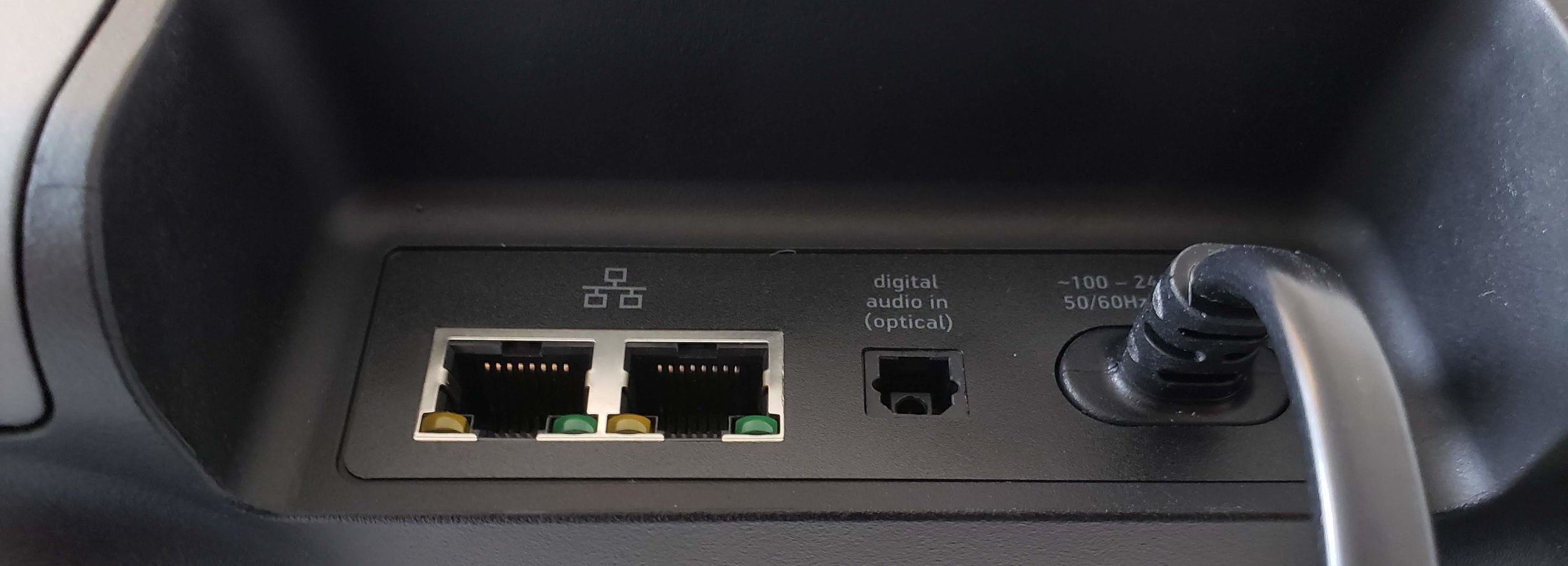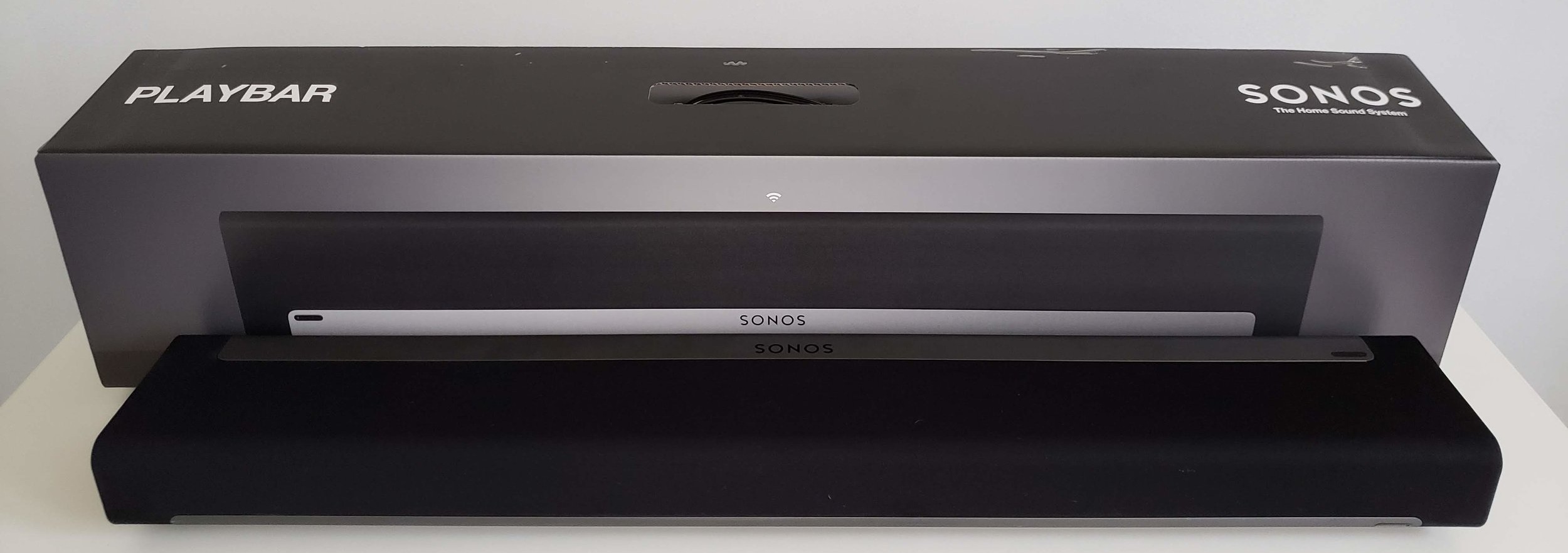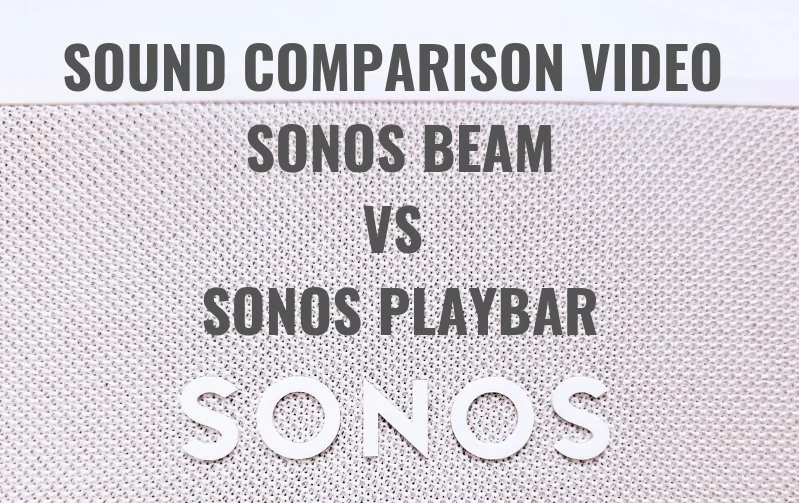Sonos Beam vs Playbar
/Sonos Beam vs Sonos Playbar: SOnos Beam Sound Bar With Alexa Built in. The Capacitive Touch Controls Can be seen on Top of the Speaker with the Alexa Microphone Mute Button.
Sonos Beam vs Playbar: Our Smart Home Take
The Sonos Beam is the latest soundbar addition to the Sonos soundbar lineup and if your considering a getting a soundbar the Sonos Beam and Sonos Playbar are two of the best sound bars on the market providing exceptional sound quality and easy to use streaming features. The only issue is how do you know which Sonossoundbar is right for you? Is the Sonos Beam better than the Sonos Playbar?
We provide you with the the information so you can can choose which Sonos Soundbar is right for your home, between the Sonos Beam or Sonos Playbar.
Sonos Beam vs Playbar: Testing
I’ve had experience with the Sonos Playbar for years and knew it was incredibly capable smart home speaker. However when the Sonos Beam came out I was intrigued by a new Sonos Beam and had to test it out. But in order to compare the two Sonos Soundbars it would require me to get another fresh out of the box Sonos Playbar to do an apples to apples comparison. So I enlisted a friend that I knew was looking to upgrade his sound system and we bought both the Sonos Beam and the Sonos Playbar to test together for a week. We ran both the Beam and the Playbar through several different tests below to get a good comparison of both Sonos Sound bars.
Here’s the list of tests we ran on the Sonos Playbar & Sonos Beam. The results of the testing and our observations are listed further down in the post.
Max Volume Test
Connection & Setup Test
Works With Alexa
Surround Sound Setup
Treble at All Volumes
Sound Clarity Volume Range
Bass at Low Volume
Bass as Mid Volume
Bass at High Volume
Sonos Beam vs Playbar: How They Work
I think this is one of the biggest differences between the Sonos Beam and Playbar, the connect to your TV and work in entirely different ways. They both have great sound quality but the biggest difference is how your TV will interface with these two systems.
The Sonos Beam has an HDMI Port that easily connects directly to any modern TV HDMI port making it compatible with most TV’s out there making setup a breeze.
The Sonos Playbar connects via an optical port and doesn’t have any HDMI connection. Most TV’s have an optical port but we found that not all TV’s have a compatible optical port, one of the Panasonic TV’s we used in our test had a proprietary optical connector and required that we get an HDMI to optical converter to get the optical port to work with the Sonos Playbar. This was a minor inconvenience and the optical port cable that came with the speaker connected with no issues to the Sony and Samsung TV’s we tested but for some people this might be a deal breaker.
Sonos Playbar Connections, It Does Not Have an HDMI port Like the sonos Beam.
Sonos Beam connections with HDMI port located on left side of picture.
Another big difference between the two is that since the Sonos Beam has a direct HDMI connection to the TV is interfaces directly with the TV making setup with your TV remote easy and seamless because the HDMI connection supports two way communication between the TV and Sonos Beam where the optical connection with the Sonos Playbar only supports one way audio output from the TV to the Sonos Playbar.
Sonos Beam vs Playbar : Works With Alexa
Both the Sonos Beam and Sonos Playbar work with Alexa, however the Sonos Beam has a big advantage over the Sonos Playbar. The Sonos Beam has Alexa built in with a built in Alexa compatible micorphone. With Alexa built into the Sonos Beam it allows you to control the Sonos Beam with your voice but you can also use it to control other smart home devices in your home like smart light switches, smart plugs and smart thermostats.
I was amazed by just how good the built in microphone is on the Sonos Beam, it has what I think is the best built in microphone capabilities of any of the Alexa devices I have tried out so far. The Alexa microphones are easily able to understand and process my Alexa voice commands when I’m in another room issuing Alexa commands. Just like all the other Alexa devices the the Sonos Beam also has an Alexa mute button if you need to turn off the voice services for any reason.
Related Post: Top 101 Alexa Voice Commands
Because the Sonos Beam has Alexa built in and it’s connected to your TV with an HDMI cord, it also supports some limited TV control commands that allow you to turn on and off your TV with your voice, and adjust the volume. We hope that Sonos expands the TV functionality in the future but I use the “Alexa, turn off TV” command all the time if I ended up leaving the TV on and I’m walking around not near a remote control.
Having Alexa built in to the Sonos Beam creates a triple threat device that can be used as an Alexa device, as a TV soundbar and as a streaming music player. The versatility of the Sonos Beam makes it a great multi purpose device.
Sonos Playbar Controls
Sonos Beam vs Playbar Comparison
Test Results
Max Volume Test: Winner Sonos Playbar, its larger and is slightly louder at max volume.
Connection & Setup Test: Winner Sonos Beam, it offered easier setup.
Works With Alexa: Winner Sonos Beam, with Alexa built in it works great with Alexa.
Surround Sound Setup: Winner Sonos Beam, with it’s HDMI connection it made it easy to setup surround sound with two Sonos Play:1 Speakers.
Treble at All Volumes: Tie
Sound Clarity Through Volume Range: Tie, both speakers provided excellent clarity.
Bass at Low Volume: Tie
Bass as Mid Volume: Tie
Bass at High Volume: Sonos Playbar, at extermely high volumes the Sonos Playbar does have deeper base, it’s well above what I would call the normal comfortable listening range at which you can distinguish the difference and I can only see this being an issue if you were blasting the music. Adding the surround sound speaker Sonos Play:1’s helped the Bass sound even better with both the Sonos Playbar and Sonos Beam.
Sonos Playbar
Sonos Playbar vs Sonos Beam : Airplay 2 Support
The Sonos Beam has AirPlay 2 support built in meaning that it has native integration with your iPhone allowing you to stream music from your iPhone to the Sonos Beam and other AirPlay 2 enabled speakers like the Apple Homepod all at once. AirPlay 2 support also means that you can control your Sonos Beams using Siri voice commands directly through your phone.
You don’t need to use AirPlay 2 to play music on your Sonos speakers, you can use the Sonos app from your iPhone and stream whatever music you like from your phone or streaming service. The Sonos app will also let you group multiple Sonos speakers together so you can play music throughout your home.
The Sonos Playbar does not support Apple AirPlay 2 support. But you can still stream music from your iPhone to your Sonos Playbar using the Sonos App.
Sonos Beam vs Sonos Playbar Sound Quality
Both the Sonos Beam and Sonos Playbar have amazing sound quality, and at low normal and high volumes they both preform great. At very high volume the Sonos Playbar does have slightly richer bass but at normal listening volumes the Sonos Beam and Sonos Playbar pump out sound that is amazingly similar, which is part of the magic of Sonos and their high quality products. Above we’ve provided a sound quality comparison video so you can listen for yourself.
Sonos Beam vs Sonos Playbar Review : Summary
Both of these Sonos Soundbars are extremely high quality and will sound great in your home with either one you choose. I personally ended up sticking with the Sonos Beam because I liked the form factor and it had Alexa built in. I found that adding the Sonos Play:1 speakers as surround sound speakers even further boosted the listening experience with the Sonos Beam. If you have concerns about the bass with the Sonos Beam pairing it with two additional sonos speakers adds more bass or you could use the Sonos Sub if you want super bass. However this isn’t necessary as it has great sounding bass at every sound level except at the point where it’s loud enough to annoy your neighbors. For the average person I don’t see a need to turn this speaker up to 100% as it’s more than loud at 50% and extremely loud at 100% volume.
For a reference point we typically listen to the Sonos Beam System at no more than 15-20% it’s volume range. At about 45% you wouldn’t be able to hear the person next to you talking from a foot away, at 85% volume I can’t barely hear myself think, and at 100% it’s uncomfortably loud and I can hear it in my driveway, and that’s with the Sonos Beam. Sonos Speakers are incredibly powerful and can fill a music with room.
Given in testing I found I typically listen to the Sonos speakers in the 15-20% volume range and no more than 30% volume even when I want to listen to “loud” music I didn’t see a need to keep the Sonos Playbar which is even louder.
My Sonos Beam is located in an open concept room about 25ft long, 14ft wide with 11ft ceilings. It does a great job filling the space with sound.
The Sonos Playbar is louder than the Sonos Beam and does have deeper bass at very high volume, but I think most people won’t be listening at 100% volume for extended periods of time and if you did I would recommend hearing protection because it’s extremely loud. If you have a room with vaulted ceilings or it’s large the Playbar is a good option.
The detractors too the Playbar is that it doesn’t have an HDMI port like the Beam and it doesn’t have Alexa built in like the beam. The Playbar only comes in grey/black vs the Sonos Beam which comes in both white and black to match your decor. The Sonos Playbar still works with Alexa it just requires a separate Alexa device like an Echo Show or Echo Dot to control it with voice commands. The Sonos Beam also has AirPlay 2 support built in meaning that it has native integration with your iPhone enabling a few more streaming features like native Siri control from your iPhone which is not supported by the Sonos Playbar.
The reality is that both of the Sonos Soundbars are great speakers. I choose the Sonos Beam because it has more integrated technology, immersive sound and sleek style that I was drawn too. You can’t go wrong with either of these Smart Soundbars as they both deliver on their promise of thrilling audio.
